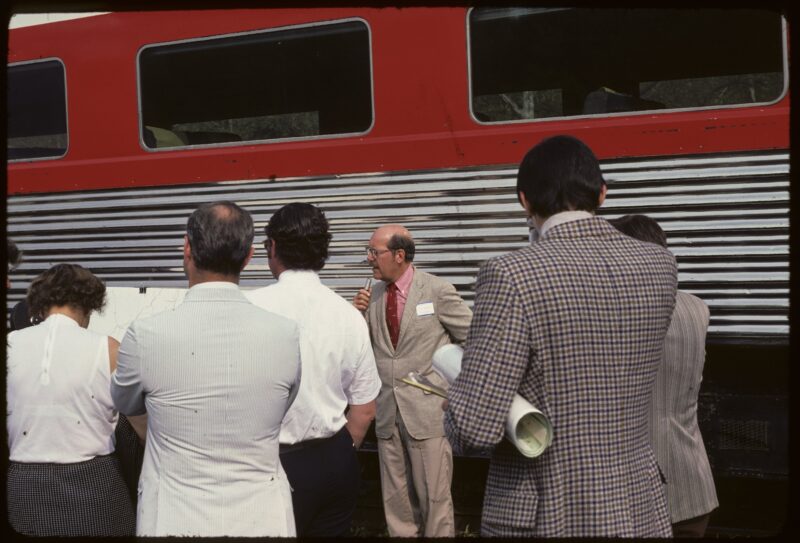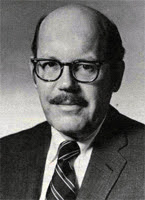“I don’t know how the idea originated. It started with the conservancy and probably had to start with either John [Oliver] or me. But I can’t tell you who was the genius behind the whole thing. I think the idea of a linear section of land was always appealing to us, though, because obviously, you know, it could become a trail. And trails were important items in our lives because [they] gave access to lands. And I should add that such access was extremely important to all of us. To borrow a word from the Sierra Club book, if you can see the wonders of the wild land, then you can be persuaded to help protect it. But if you don’t see it, you don’t understand what’s there. And hence, you have no idea why it might be worth saving.”
– Joshua Whetzel, May 2005[1]
When the Western Pennsylvania Conservancy (WPC) in 1973 learned of a proposal to abandon the Western Maryland Railway from Connellsville, Pennsylvania to Cumberland, Maryland,[2] WPC president Joshua Whetzel was presented with an opportunity to repurpose the railroad line as a hiking and biking trail and continue the organization’s mission of preserving Western Pennsylvania’s natural lands. His work in acquiring the first miles of railbed would ultimately achieve the goal of connecting Pittsburgh to Washington D.C. via recreational trail, although it took several decades of work by numerous people.
The seeds of the Great Allegheny Passage perhaps germinated during Whetzel’s time in Washington D.C. as treasurer of the Conservation Foundation,[3] when he spent time walking along the historic Chesapeake & Ohio Canal towpath.[4] Years later he would acknowledge that, “the fact that a trail existed through that busy little part of Washington called Georgetown that had historical significance and went along the Potomac” influenced the idea that a comparable rails-to-trails initiative in Western Pennsylvania could be launched.[5]

Josh Whetzel (center), giving a speech to onlookers at the Bowest Railyards as part of the 1975 “Last Ride” festivities.
A year later, in 1969, Whetzel returned to Pennsylvania to begin a decade-long tenure as WPC president, during which he led the organization in significant conservation and recreation initiatives, including the beginnings of what would become the Great Allegheny Passage. In October 1973, Whetzel and WPC director of land operations John Oliver met with Western Maryland, Baltimore and Ohio Railroad and Chessie System executives and counsel in Baltimore, Maryland to discuss the potential railroad abandonment.[6] It took two years for the Interstate Commerce Commission to approve the petition[7] and another three years for the Chessie System and the Western Pennsylvania Conservancy to reach a charitable deal for the nearly 27 miles of railroad right-of-way.[8] Despite lack of support from the governor and the Commonwealth of Pennsylvania – which had protested the abandonment[9] – Whetzel and the WPC pressed on. At the Western Maryland Railway’s suggestion, the WPC organized a special passenger train ride on the railroad as a media event to win support for the recreational trail.[10] After his tenure as WPC president ended in 1978, Whetzel continued as board chairman until 1995.
Josh Whetzel 2005 Video Interview with Paul G. Wiegman
Josh Whetzel 2005 Video Interview Transcript with Paul G. Wiegman
Author: Jennifer Sopko
Endnotes
[1] Paul g Wiegman interview with Joshua C. Whetzel, May 2005.
[2] “Notice: The Western Maryland Railway Company (WM) and the Baltimore and Ohio Railroad Company in Pennsylvania (collectively referred to as the B&O) hereby give notice that on the 11th day of June, 1973, they filed with the Interstate Commerce Commission at Washington, D.C., an application under Section 5(s) of the Interstate Commerce Act for an order approving and authorizing the acquisition of trackage rights by WM over the line of railroad of B&O, which application was assigned Finance Docket No. 27406… At the present time WM has a parallel line of railroad which it seeks to abandon in Docket No. AB-69 (Sub 1).” – Federal Register, Vol. 38, No. 123. Wednesday, June 27, 1973. Pages 16951-16952. https://www.govinfo.gov/content/pkg/FR-1973-06-27/pdf/FR-1973-06-27.pdf. Also, “Western Maryland Railways Company hereby gives notice that on the 11th day of June 1973, it filed with the Interstate Commerce Commission at Washington, D.C., an application for a certificate of public convenience and necessity permitting abandonment of certain portions of its line of railroad… a total distance of approximately 124.75 miles, all in Allegany and Washington Counties, Maryland, Fayette and Somerset Counties, Pennsylvania, and Morgan and Mineral Counties, West Virginia.”
[3] Marylynne Pitz. “Obituary: Joshua Clyde Whetzel, Jr./Tireless force for improving environment, science center.” Pittsburgh Post-Gazette. January 28, 2012.
[4] Paul g Wiegman interview with Joshua C. Whetzel, May 2005.
[5] Paul g Wiegman interview with Joshua C. Whetzel, May 2005.
[6] Chessie System officials met with Joshua Whetzel and John Oliver of the Western Pennsylvania Conservancy on October 2, 1973 in Baltimore, Maryland. The parties agreed to several points concerning the potential Western Maryland Railway right-of-way sale. – Letter from Richard B. Allen, General Attorney, Chessie System to Joshua C. Whetzel, Jr., President, Western Pennsylvania Conservancy (WPC), October 3, 1973.
[7] The initial decision granting the Western Maryland Railway abandonment order, Docket No. AB-69 (Sub-No. 1) was issued by Administrative Law Judge William G. Spruill on February 14, 1975 and served to all parties involved on February 19, 1975. A copy of the decision is included in a letter from Richard Allen, General Attorney, Chessie System to John C. Oliver, III, Director of Land Operations, Western Pennsylvania Conservancy, February 20, 1975.
[8] Since the Western Pennsylvania Conservancy’s (WPC) meeting with Chessie System officials in 1973, Joshua Whetzel is featured in a series of letters between the Chessie System, WPC and their respective legal counsels chronicling the years-long negotiations for the Western Maryland Railway right-of-way. The WPC purchased 26.75 miles of the Western Maryland right-of-way from the Chessie System on June 9, 1978 – Fayette County Recorder of Deeds, Deed Book Vol. 1238, Pages 68-73. – https://pa.uslandrecords.com/palr2/PalrApp/index.jsp.
[9] The Commonwealth of Pennsylvania protested the Western Maryland Railway abandonment because of transportation issues such as the potential impact on the quality of rail service for other railroad lines. Letter from Robert B. Dennis, Planning Supervisor, Office of State Planning and Development, Commonwealth of Pennsylvania, to J.C. Whetzel, Jr., President, Western Pennsylvania Conservancy, November 21, 1974. Commonwealth of Pennsylvania Protest Against Docket No. AB 69 (Sub-No. 1), Westmoreland Maryland Railway Company Abandonment of 125 Miles of Line, and Finance Docket No. 27406, Western Maryland Railway Company Trackage Rights Over Baltimore & Ohio R. Co., July 27, 1973.
[10] The May 21, 1975 train ride began in Pittsburgh, picked up the Western Maryland Railway line near Connellsville and continued to Hancock, Maryland. WPC leaders, railroad officials, state agents, local government officials and press members were on board. Chessie System News Release, May 20, 1975. “60 Mile Recreational Trail Planned For Abandoned Railroad Right-of-Way,” Western Pennsylvania Conservancy News Release, May 21, 1975.

